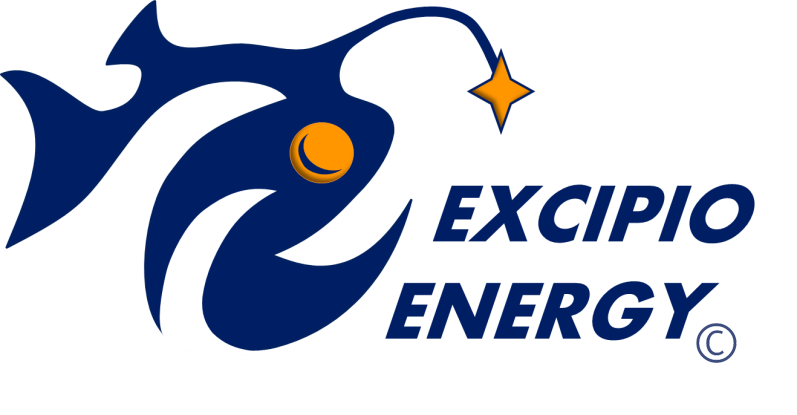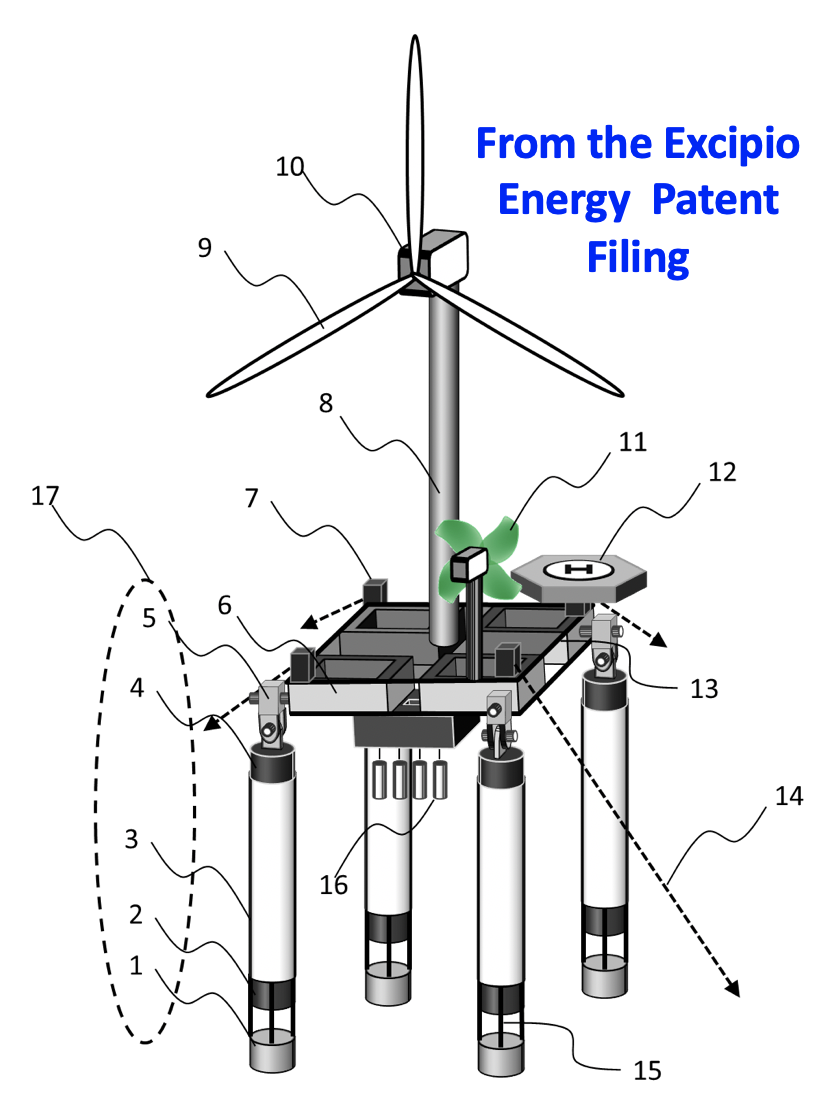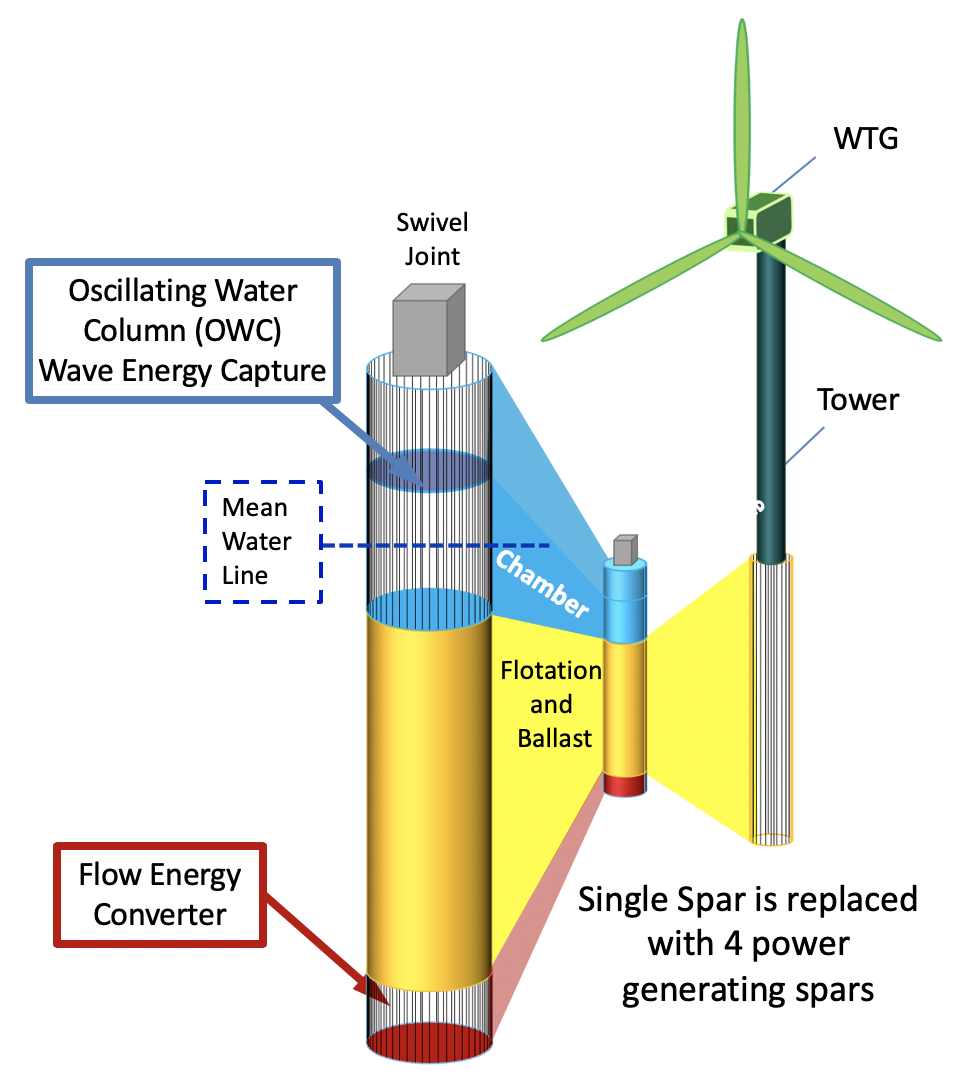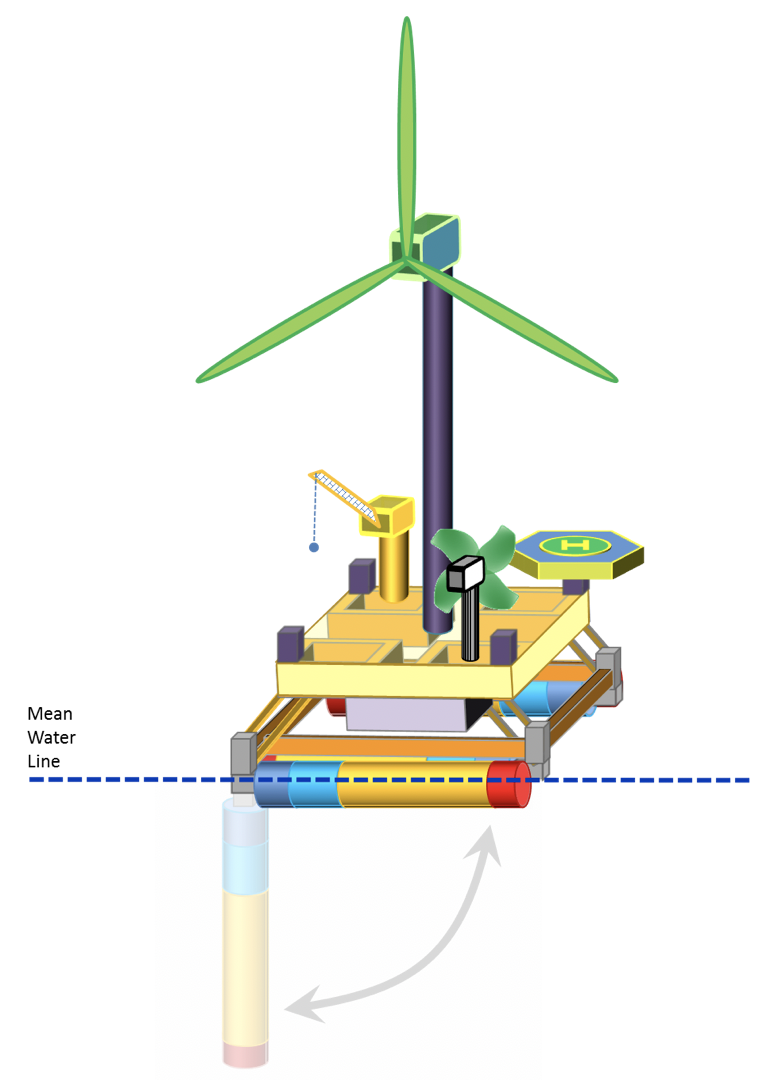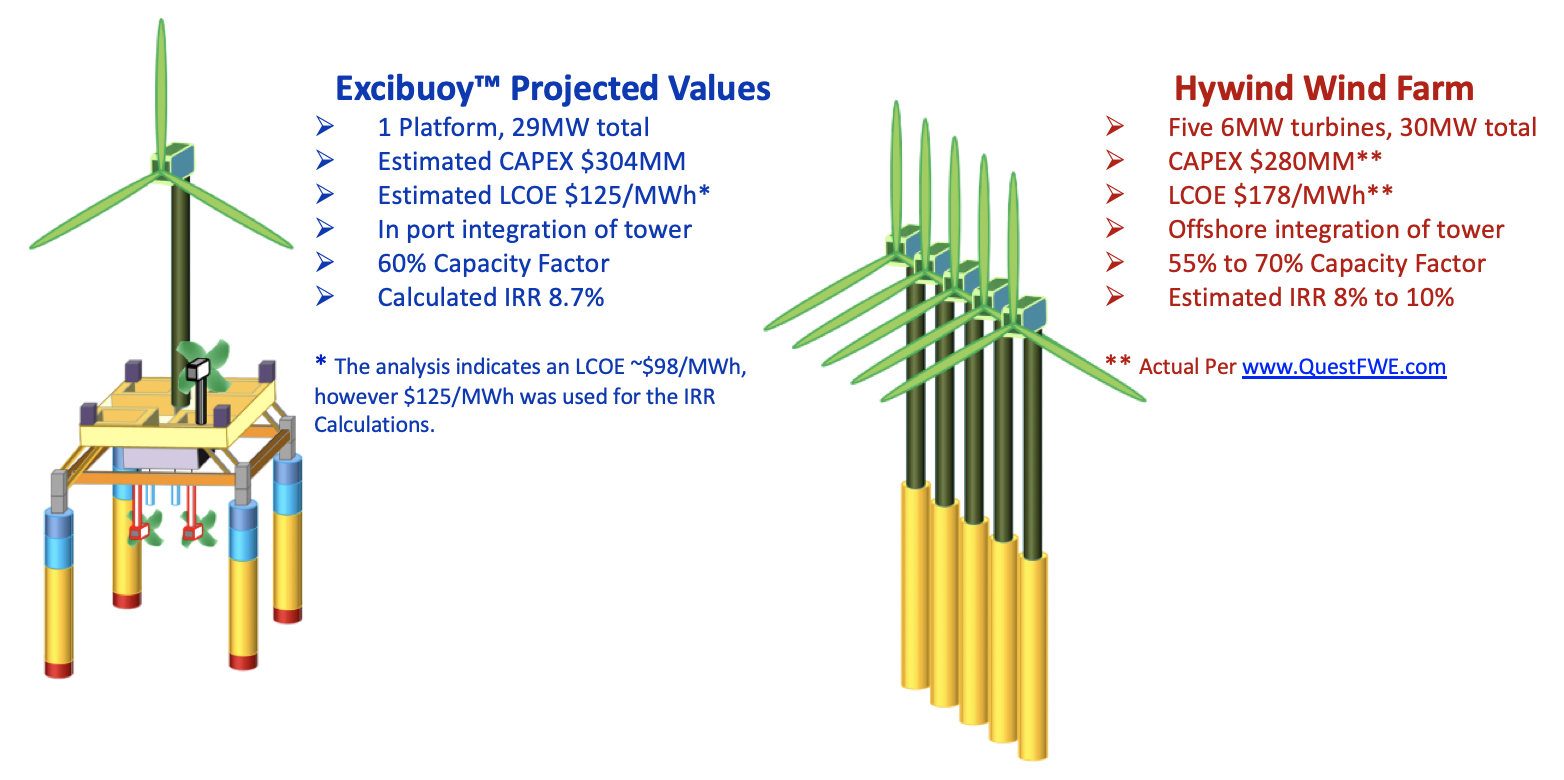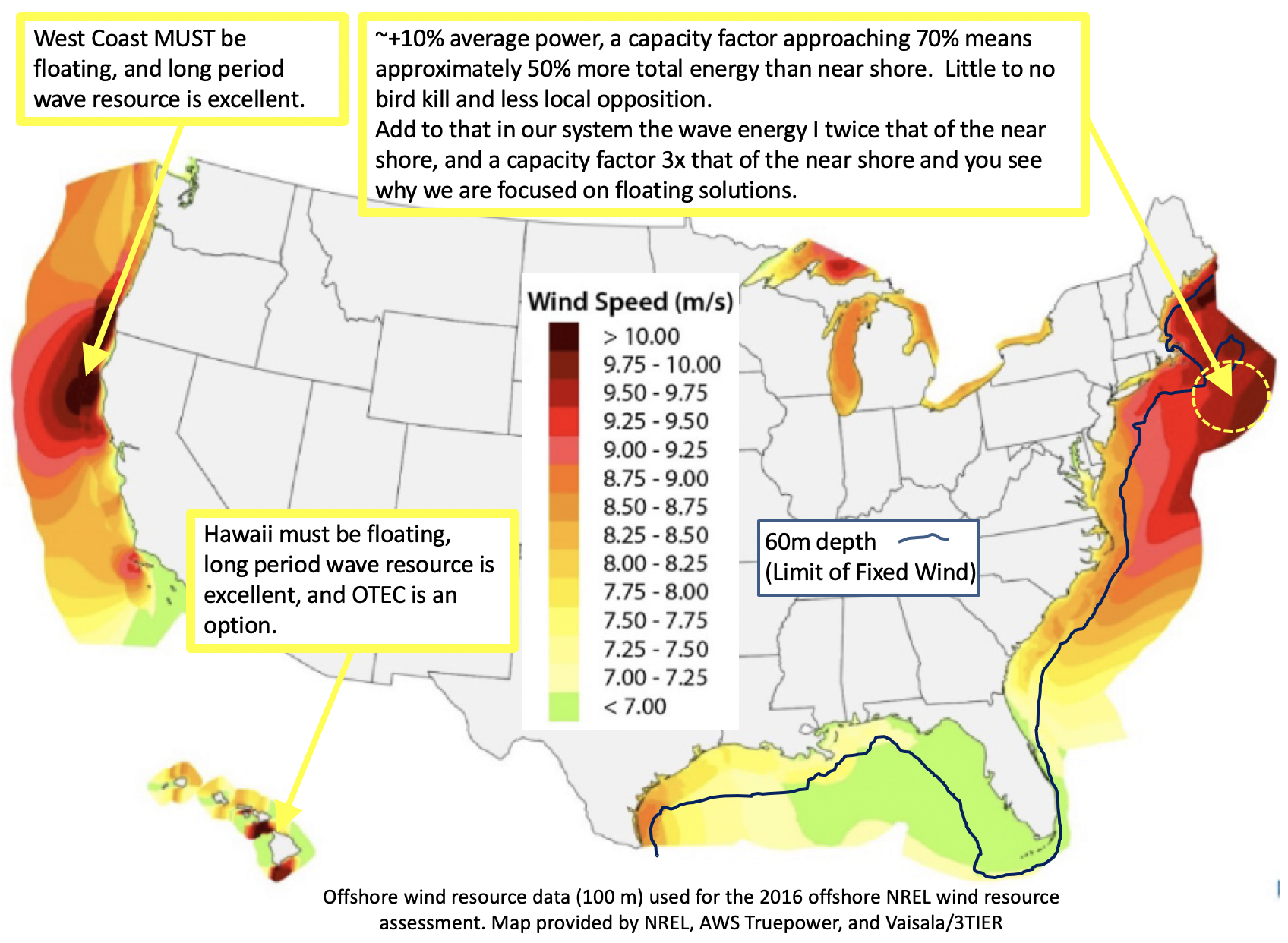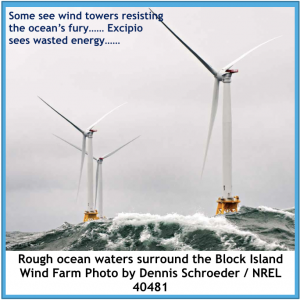ORE Technology
Offshore Renewable Energy (ORE) Technology Summary
Offshore Wind is the prevalent offshore renewable energy source. Investment cost of offshore wind systems increases with water depth due to structures and/or moorings.
Ocean Thermal Energy Conversion (OTEC) uses the temperature differential between the surface water and the seabed to drive a large heat engine, requires temperature difference of ~20oC to run efficiently.
Marine Hydro-Kinetic (MHK) devices span energy converter systems involving waves and subsea flow.
- Wave Energy Converters (WEC) are oscillating/reciprocal motion systems operating at or near the ocean surface
- Tidal energy converters, a type of Flow Energy Converter (FEC), are cyclic in operation, accommodating reversing flow and are typically located in areas of high tidal activity where peak current speeds are in excess of 3 knots (1.6 m/s).
- Steady Offshore Current energy converters are generally applied in areas of persistent current where velocity and direction changes are not cyclic; a classic example is the Gulf Stream. These are another type of FEC.
- Run of the River systems, which are the last type of FEC, as the name implies are turbines placed in a flowing river. Debris and seasonal variations are their main concerns.
The Excipio Energy EXCIBUOY™
Excibuoy™ Design
Excipio’s patent centers around each spar leg being a wave and flow energy capture device in addition to supporting the wind tower.
- Flow Energy Converter – operational configuration
- Ballast
- Spar Hulls – 4 shown; can vary from 3 to 8 depending on deck load
- Oscillating Water Column Wave Energy Capture
- Freely Rotating Joint
- Topsides Hull Space for Equipment or OTEC system components (in northern climes framing is simplified or energy storage can be added)
- Mooring Energy Capture Device
- Conventional Wind Tower
- Turbine Blades
- Nacelle
- Direct Drive Low Speed Wind Turbine (one shown for clarity, 4 to 8 possible due to wide spread of legs)
- Helideck Access (included in prototype as an option)
- Deck Structure
- Mooring Line
- Extendable mount for Flow Energy Converter, operational position
- Point Absorber Wave Energy Capture devices and/or Surface Flow Energy Converters shown in deployed configuration for operations
- Platform Leg Assembly – key to an Excibouy
The Key to Excibuoy™
Offshore renewable technologies other than wind are not cost effective in deeper waters (yet). Neither wave, ocean currents, nor OTEC systems are efficient enough at present to support the cost of mooring, installation, and power transmission.However by increasing the size of a spar leg these technologies can be added at a small incremental cost. As an example this will reduce the LCOE of existing wave energy devices from $600+/MWh to ~$75/MWh.
In Port & Shallow Tow Configuration
- The design allows fabrication, integration and pre-commissioning in harbors with 12m or more of draft. Once at sea the spar legs are deployed.
- Hull designs of this type have been proven by test tank modeling.
- Based on those tests the platform itself will be more stable than a conventional spar, with angles of deflection of the turbine reduced 50% for the same sea state.
- Unlike a single spar, Excibuoy has deck space that can support other renewable technologies.
The Premise
If you are going to build a device to produce energy from the seas any part of the system designed to withstand, and not capture, nature’s forces is wasted CAPEX.If you ask offshore wind experts what they think of integrating wind/wave/OTEC into wind farms they will give you a grocery list of excuses why they don’t want to try:
- The technologies are not mature enough (We have reviewed more than 500 technologies and thousands of patents, they are ready but need integration studies);
- It will add too much complexity (only said by someone who has never been on an oil and gas platform);
- It will add cost (yes, but also increase power output, cost per kWh will reduce overall and be more reliable);
- It will complicate permitting (it is unlikely to add time);
- We need to lean on Europe’s experience, and they stick to wind only (There is great value in experience and the intent is to build on that experience, not rest on it.);
- Offshore wind locations are not optimal for waves and currents (there are devices suitable for lower energy waves and currents, LCOE will be decreased.)
Gulf of Mexico ORE Potential
Excipio is targeting the Gulf of Mexico for the following reasons although Excipio will pursue any opportunity regardless of its geographic location.
- While the waters of Gulf of Mexico are considered a low energy environment compared to some locations, the Gulf is one of the better areas for offshore wind, and the temperature profiles fit OTEC requirements.
- The capital cost of any offshore development is highly dependent on the harshness of the environment. The high-energy locations (big waves, fast currents) favored by many companies would be challenging economically even for a mature and profitable industry like oil and gas.
- Many of the locations with high potential are environmentally sensitive, with local communities wary of any type of offshore development. The western Gulf Coast is not only friendly to offshore development but their local economies depend on it.
- There are 2000+ offshore platforms in the Gulf which can be repurposed as renewable hubs.
- There are tens of commercially viable contingent O&G discoveries in the Gulf of Mexico that could benefit from locally produced power.
- The cost of offshore construction in the Gulf of Mexico is a fraction of the cost on the US west or east coast.
